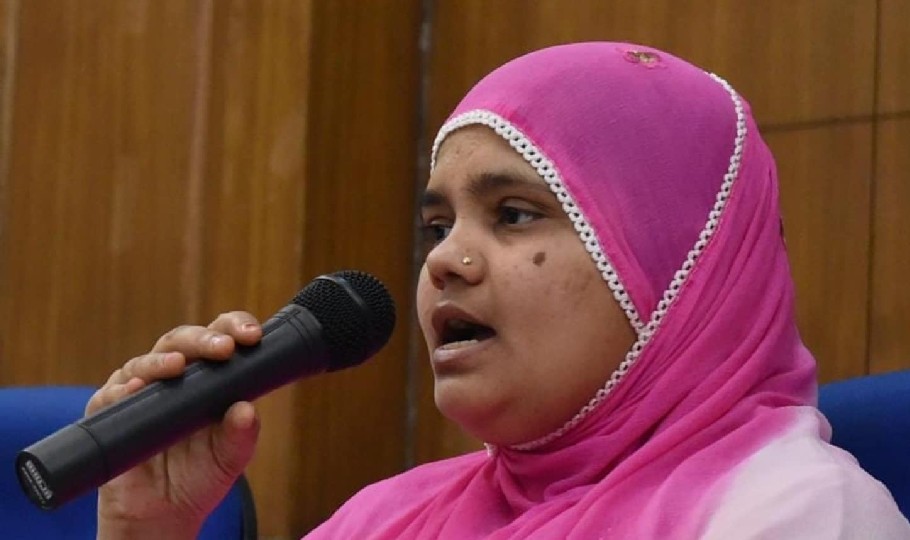
What if Nirbhaya rapists had become ‘sanskaris’ like Bilkis Bano convicts?

Imagine if the rapists of Nirbhaya had not been hanged.
Like the 11 men convicted of gang-raping Bilkis Bano and killing her baby by smashing her head, the four men behind the macabre rape of a young paramedic in 2012 in Delhi would have also got a second shot at life.
If spared the noose in 2020—some eight years after their gruesome crime that shook the country—they could have also got a chance to “reform” themselves in jail while serving life sentences.
And who knows, if luck had been on their side, some government eyeing an impending election could have portrayed them as “sanskari” and ordered their release from jail at some point.
Also read: Release of Bilkis case convicts: This stain on Modi govt’s legacy will never wash off, says Cong
It is certainly no use debating and discussing the various possibilities that could have presented themselves had the Nirbhaya rapists been sentenced to life in jail instead of being handed down the death penalty. Hanged in ignominy in Delhi’s Tihar, they have been reduced to anonymous ash for long.
But the different fates that the rapists of Bilkis Bano and Nirbhaya faced is certainly very troubling.
Arbitrary enforcement of law
Not one from the legal fraternity, I am not even going into the rights or wrongs of why the rapists of Bilkis Bano, though convicted of a crime no less macabre than the fatal rape of Nirbhaya, were set free by the government after 14 years in jail.
The outrage over their premature release is understandable.
Also read: Rectify horrendously wrong decision of remission in Bilkis Bano case: 134 ex-bureaucrats to CJI
But more incomprehensible for me is how the death penalty is imposed in this country. Two crimes share a somewhat similar degree of brutality, but strangely, some of the convicts are hanged while others get to live. And, if fortunate like the Bilkis Bano rapists, they get to live freely.
Why?
As I said, I am no legal expert. But I am informed enough as an ordinary citizen to know that though the morality of the death penalty is still hotly debated, the enforcement of this extreme punishment—perceived as grotesque by some—has been upheld by the Supreme Court in 1980.
Under the law, state-sponsored killing for terrible crimes is legal in the “rarest of rare cases.” But this application of “rarest of rare cases” benchmark seems to be at the root of arbitrary enforcement of the law.
In the judges’ hands
Ever since a young, intrepid reporter of the magazine that I once edited wrote a thought-provoking piece on the unevenness in the application of the law, I have been at my wits’ end to make sense of it.
Also read: Recalling Bilkis Bano: Horrifying rape and murder case that shook India
Consider these instances that my colleague had highlighted, and you would be as confused as I am:
In 2004, Dhananjay Chatterjee of West Bengal was hanged in Alipore jail of Kolkata for the rape and murder of a minor at her home in 1990. In upholding his death sentence, a Bench of the Supreme Court had ruled that “the courts must not only keep in view the rights of the criminal but also the rights of the victim of a crime and society at large while considering the imposition of appropriate punishment.”
A different Bench of Supreme Court in 2006, however, commuted the death sentence of Amrit Singh, convicted of rape and murder of a seven-year-old girl. Justifying the reprieve, the judges said: “The manner in which the deceased was raped may be brutal, but it could have been a momentary lapse on the part of the convict, seeing a lonely girl at a secluded place.”
For someone like me, it seems it is overwhelmingly in the judges’ hands to determine which convict gets to live and which gets to die.
Apparently, perceptions of the judges differ, and there are hundreds of judgments where drastic variations in the application of the death penalty are on display.
One crime, different outcomes
The best example, I am told, was cited by Justice PN Bhagwati in a report of the Law Commission that he headed. It pertained to the case of one Harbans Singh.
Also read: Justice has prevailed, says PM Modi on hanging of Nirbhaya case convicts
According to those in the know, Harbans and two others were convicted of murdering four members of a family. Sentenced to death by the Allahabad High Court, the three convicts moved Supreme Court separately, appealing that they be sentenced to life imprisonment rather than being hanged.
But the appeal of one of the convicts, Jeet Singh, was turned down by a Bench and he was duly hanged. However, a different Bench heard the appeal of Kashmira Singh and spared him the gallows. Citing that ruling, even Harbans finally escaped death.
So, one crime but different outcomes for the criminals. One died while two lived.
“This is a classic case which illustrates the vagaries in the imposition of the death penalty…The question may well be asked by the accused: Am I to live or die depending upon the way in which the benches are constituted from time to time?” wrote Justice Bhagwati.
Weeks after the 11 convicted rapists of Bilkis Bano walked free, controversially released by the Union home ministry and the Gujarat government, I also have somewhat similar questions: Why this discrimination? Why weren’t the rapists of Nirbhaya given a long rope and allowed to “reform” themselves and become “sanskari” like the Bilkis Bano convicts?
(Ruben Banerjee is former Group Editor-in-Chief of Outlook magazine. He is the author of ‘Editor Missing’)
(The Federal seeks to present views and opinions from all sides of the spectrum. The information, ideas or opinions in the articles are of the author and do not necessarily reflect the views of The Federal)

